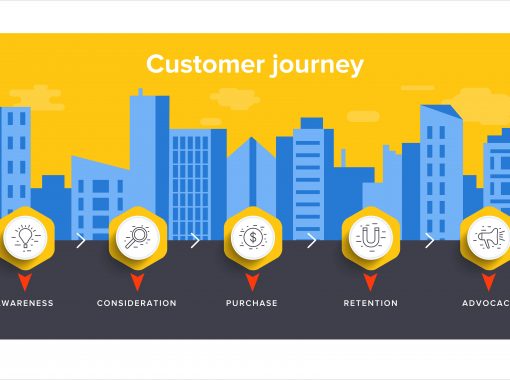
How Long Should Blog Posts Be?
Marketers frequently ask, “How long should blog posts be?” It’s a great question because the length of your content impacts readability and SEO. However, it’s not a simple answer because the ideal blog post length depends on your purpose and the topic.
This article reveals the average blog post length to increase traffic to your website, including information that will help you determine the ideal word count.
Should All Blogs Be the Same Length?
If you Google the question, “How long should blog posts be?” the current featured snippet says between 1,500 and 2,500 words. This answer suggests all blogs should be the same length, which is inaccurate. A one-size-fits-all response does not consider all the factors influencing a blog’s success.
The more nuanced answer is the ideal blog post length depends on your audience, content type, the keywords you’re competing for, where the reader is in their buyer’s journey, and search intent. Let’s break down each of these key factors and how they influence your word count.
Ideal Blog Post Length Based on 5 Key Factors
A blog post’s topic and goal isn’t the sole determinant of word count. Examining these five factors of your post will provide a more strategic approach to determining how long it should be.
1. Audience Expectations
Who are you writing for, and what level of expertise do they have on the topic? If you are writing a B2B blog for well-informed prospects looking for a comprehensive answer to an industry question, you will need 1,500 to 3,000 words to fully address the topic.
Examples of topics that lend to a longer, comprehensive blog might include:
- The Definitive Guide to Enterprise Cloud Computing
- Effective Strategies for Banks to Navigate the Digital Transformation
- Employment Trends in Technology for 2024
- Reducing Cart Abandonment in B2B E-commerce
However, if you’re writing to address a common pain point of your customers and they are looking for a concise answer to fear or concern, a short 300- to 500-word blog will satisfy them.
Examples of a topic that warrants a short blog post might include an update from the CEO on a project, an announcement of an upcoming event, or an answer to an FAQ. An understanding of your audience’s preferences should guide your content length.
2. Content Type
Not all questions require an extended answer. If you try to make every blog the same length, some topics will be truncated and others unnecessarily long. Since your EEAT (Experience, Expertise, Authority, Trust) is affected by whether or not people read your content after clicking on it, the length of the content must match the topic.
Although the answer to “How long should blog posts be?” is often “It depends,” we can offer an ideal blog post length for some typical content types. Keep in mind that while these represent the word count ranges for these types of content, your blog can be longer or shorter based on the complexity of the topic, your audience, and keywords.
- News articles: 700 to 1,500
- B2B use cases or demos: 700 to 1,500
- Ultimate guides: 2,500 to 3,000
- Informational blog posts: 1,000 to 2,000
- Guides and how-tos: 1,500 to 3,000
- Listicles: 1,000 to 2,000
- Product reviews: 1,000 to 2,000
- Thought leadership: 1,500 to 2,000
- Opinion or editorials: 300 to 1,000
- FAQs: 300 to 500
3. Keywords
When you target a set of keywords, you are competing against other blogs using those exact phrases. You want to outshine the competition with “pillar content,” or a comprehensive and authoritative explanation of the topic. As a result, the more general and competitive your keywords, the longer and more in-depth your article should be.
Research the top search results for your target keywords. Notice the number of words in their blogs and identify gaps in the coverage you can address. This gives your writer direction and can result in a blog that offers a more thorough answer compared to your competition.
4. Stage in the Buyer’s Journey
The buyer’s journey refers to an individual’s process between realizing their need and finding a product or service that represents the solution. A simplified buyer’s journey includes three stages:
- Awareness (they identify the problem or need)
- Consideration (they research potential solutions and compare their options)
- Conversion (they make a purchase)
Awareness
Awareness-level content will generally address pain points and answer questions that lead prospects to your business. For example, suppose your B2B company offers a cloud-based CRM (Customer Relationship Management) solution. In that case, awareness-level content might address companies’ challenges in managing customer data, answer frequently asked questions, or identify specific benefits of upgrading outdated CRM systems.
These awareness-level articles would introduce potential clients to modern CRM solutions and why they might need them. Most of these blogs are on targeted topics that easily fit into a 700- to 1,000-word blog format.
Consideration
For consideration-level content, your audience has identified the problem and wants to know how your business can solve it. This requires more in-depth content identifying the unique benefits your company offers, how your solution competes, and how it will improve their lives.
For example, a consideration-level blog post might compare different cloud-based CRM platforms, delve into your solution’s advanced features and integrations, or provide case studies on how your clients have improved efficiency or profitability by implementing your system. At this level, blogs are more technical and detailed, requiring 1,000 to 2,000 words.
Conversion
During the conversion stage, prospects are ready to buy and need to be nudged toward the purchase. This stage can encompass a variety of content types and lengths, from product demonstrations and tutorials to comparison charts and testimonials. The vital element at this stage is to include a clear call to action at the end of a 1,500 to 2,000-word blog post.
5. Search Intent
We would be remiss not to mention search intent in a conversation about the question “How long should blog posts be?” Understanding search intent is an aspect of keyword strategy that requires getting into a prospect’s mind. When a user types in a search term, what do they know, what are they thinking about, and what information do they want to see?
For example, someone searching for “Men’s waterproof hiking boots size 10” is likely ready to buy. They want to compare products and possibly buy one. Results that offer 2,000 words on “The History of Hiking Boots” would be frustrating.
Similarly, if users type in “Symptoms of type 2 diabetes,” they are in the awareness stage. They want to understand the symptoms of diabetes and ascertain if they need to see a doctor or take other action.
The word count tied to this search should be long enough to comprehensively cover what symptoms are tied to type 2 diabetes. Search results that yield 200 words on “Diabetic-Friendly Chocolate Bars” mismatch their intent.
Does Blog Length Impact SEO? How Long Should Blog Posts Be for SEO?
Your blog length does impact SEO, but it’s secondary to the quality of your content. Google’s top priority is to deliver content that provides accurate, complete information and a good page experience. Longer posts tend to be more comprehensive and informative, so there can be some correlation between a longer blog post length and organic search rankings. However, writing long posts to meet a word count is more likely to backfire than create benefits.
Two other factors that significantly impact the success of your blogging campaigns are backlinks and usability.
Backlinks and Internal Links
A more significant factor than word count is the number of backlinks leading to your blogs. Secondary to that are the internal links within your website, which show the search engines which of your website pages are the most important. PageRank continues to be a fundamental component of the Google algorithm.
If your content speaks to readers, is engaging, and answers a question that people have in a unique, readable, or compelling way, people are more likely to share it on social media, their websites, and other blogs and articles. This web of backlinks is a significant factor in your page rankings.
Usability
Another factor impacting your blogs as significantly as your word count is the usability of your website. Web users have high expectations and low patience. If your pages load quickly, look attractive, and are easy to scan, your blogs will have a bigger impact.
Critical Elements of an SEO-Friendly Blog Post
In addition to optimizing your word count according to the topic and audience, you can do several other things to reach the widest audience possible and maximize each blog’s SEO impact. Here are the critical elements to consider as you develop your content plan.
Is the Topic Relevant to My Audience?
Effective content addresses the pain points, answers questions, and engages with your readers’ interests. As you develop your content plan, put yourself in your customer’s shoes. How much do they know? What motivates them to look for the solutions your company offers?
Align Content Type With User Intent
Are your readers looking for a quick answer, a detailed guide, or a product to purchase? Matching your content to user intent makes it more impactful and effective.
Craft Quality Content
Whether you write the content in-house or work with a dedicated content writing agency, you want your content to be well-researched, informative, and engaging. Quality content is the backbone of any successful content strategy.
Enhance With Images and Infographics
Relevant images make your blog more interesting and enhance readability by reinforcing the text. Infographics are a powerful tool to include in your blog. They are highly shareable, which can increase your backlinks, and readers find information 70% faster in infographics compared to written text.
Internal and External Linking
Expert writers, like the hand-picked ones at ContentWriters, know how and where to link to authoritative external sources to boost your post’s credibility. Additionally, they link to pages within your website (internal links) to boost page authority and guide readers to more of your content.
Promote Your Content
Once your blog post is live, give it a boost. Promote your content on social media platforms, through email newsletters, and possibly paid advertising. The more visibility your post gets, the higher the chances of attracting backlinks.
Word Count Is Only Part of the SEO Equation
Quality, relevance, and user intent should be at the forefront of your content strategy. A well-researched, engaging 800-word article can outperform a 2,000-word piece that lacks depth or fails to address the needs of your audience. Strive for a balance between depth and brevity, remembering quality reigns supreme over quantity.
If your team lacks the resources to produce quality content at the speed and scale you need to meet your SEO goals, ContentWriters can help. With original, custom content written by subject matter experts and backed by our satisfaction guarantee, we can help you reach and engage your target audience. Connect with our team today to get started.
Joan Weisman’s strong research skills, SEO knowledge, adaptability of style and voice, and passion for staying current make her an asset for freelance web content, SEO, and copywriting.




